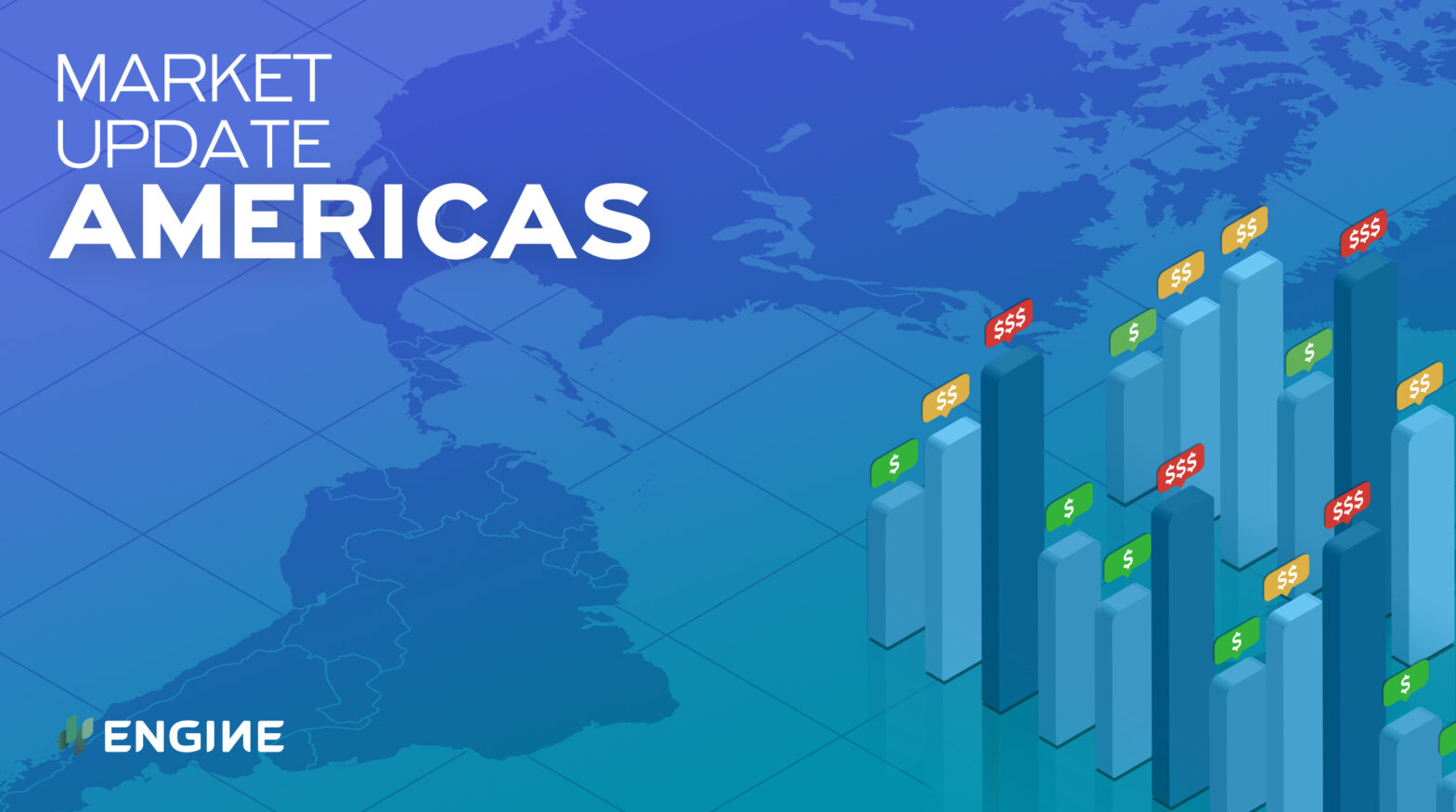Bunker prices have moved in mixed directions across the Americas as Brent’s decline has slowed after sharp losses yesterday.
Changes on the day to 09.30 CST (14.30 GMT) today:
- VLSFO prices up in Los Angeles ($11/mt), Balboa ($7/mt) and Zona Comun ($5/mt), and down in Houston ($8/mt) and New York ($4/mt)
- LSMGO prices up in Los Angeles ($49/mt), Balboa ($12/mt) and Los Angeles ($3/mt), and down in Houston ($7/mt) and Zona Comun ($5/mt)
- HSFO380 prices up in Balboa ($19/mt), and down in Los Angeles ($6/mt), New York ($4/mt) and Houston ($3/mt)
New York’s LSMGO price has surged on the back of a higher-priced prompt stem fixed in the past day. All fuel grades can be delivered on prompt dates in the East Coast port.
Prices for most fuel grades have made moderate gains in Los Angeles and Balboa, while Houston’s prices have dropped across grades.
Corpus Christi’s VLSFO price has dropped below Houston’s today, coming from a slight premium in recent days, and much wider premiums last month.
The difference between the two Texan ports’ LSMGO prices has gone the other way, with Corpus Christi shooting up to a $15/mt premium over Houston today, after having been at a discount in recent days.
Prompt deliveries of the VLSFO and LSMGO grades are widely available across the Gulf Coast region.
Zona Comun’s VLSFO price has edged higher with support from a higher-priced 150-500 mt stem that countered Brent’s downward pull. A similar-sized stem at an even higher price was fixed in Rio Grande, pushing its price $23/mt above Zona Comun’s.
Brent
Front-month ICE Brent has edged $0.21/bbl lower on the day, to $81.26/bbl at 09.30 CST (14.30 GMT).
A four-day Brent rally on the back of OPEC+ supply restraint this week came to an end yesterday, when Energy Information Administration (EIA) data showed a bigger-than-expected commercial crude inventory build in the US in the week to 1 October.
Crude stocks grew by 2.35 million bbls to 420.89 million bbls. US inventories have added weight for two weeks to firmly halt a massive stock draw that was accelerated by production outages in the Gulf of Mexico in the aftermath of Hurricane Ida.
“This was more than the roughly 1MMbbls increase the market was expecting and also larger than the 951Mbbls reported by the API the previous day,” ING strategists Warren Patterson and Wenyu Yao said.
Higher net imports propped up the crude stocks, even as refinery input of crude and utilisation rates ticked up. US Gulf Coast refineries have almost regained pre-hurricane production levels.
Gasoline stocks grew considerably, too, which could be viewed as a sign of waning demand.
“Gasoline demand dropped for a fourth straight week, which was somewhat expected given the end of summer travel and as many individuals continue to work-from-home,” OANDA market analyst Ed Moya said.
Brent has also come under pressure from Saudi Arabia’s decision to cut crude oil selling prices to Asia for November, and signals from Washington that the US might tap into its strategic oil reserves or temporarily ban crude exports to put a lid on price gains.
US energy secretary Jennifer Granholm told a summit hosted by the Financial Times that these tools are “under consideration”. The US and India – the world’s biggest and third biggest oil consumers – had called for OPEC+ to increase its output ceiling to meet growing global demand. OPEC+ decided on Monday to stick to its incremental 400,000 b/d monthly increases also for November when it convened for policy talks on Monday.
